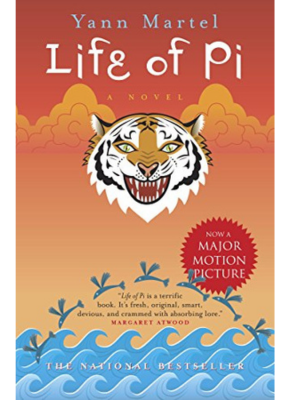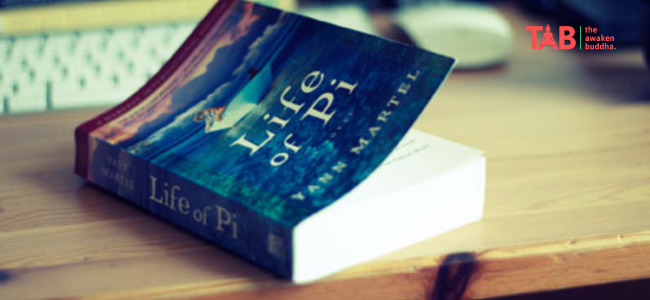Outline

1. Plot summary
2. Themes
3. Literary devices
4. Reception and impact
5. Film adaptation
Book That Will Take You on a Journey: Life of Pi by Yann Martel

Are you looking for a book to transport you to a world of adventure, survival, and spirituality? Look no further than Life of Pi, a novel by Yann Martel that has captivated readers worldwide since its publication in 2001. This article will investigate the plot, themes, literary devices, and impact of this remarkable book and its successful film adaptation.
1. Plot summary
The story follows the life of Piscine Molitor Patel, or Pi, a young Indian boy who grows up in a zoo run by his family. When his family decides to move to Canada, they board a ship with their animals and sail across the Pacific Ocean. However, disaster strikes when the ship sinks in a storm, leaving Pi as the sole human survivor stranded on a lifeboat with a Bengal tiger called Richard Parker. Pi must use his wits and durability skills to endure the harsh conditions of the ocean and the presence of dangerous predators.
2. Themes
One of Life of Pi’s main themes is physical and emotional survival. Pi’s ordeal on the lifeboat tests his limits and forces him to confront his fears and weaknesses. Another critical theme is religion, as Pi is a devout follower of three religions – Hinduism, Christianity, and Islam – and struggles to reconcile their conflicting beliefs and practices. The book also explores the nature vs. nurture debate, as Pi’s upbringing in the zoo and his interactions with the animals shape his personality and behavior. Finally, the theme of truth and storytelling is central to the book, as Pi must decide how to narrate his experience to others and whether to reveal the full extent of his suffering and despair.
3. Literary devices
Martel employs several literary devices to enhance the richness and complexity of the story. Symbolism is particularly prominent, as various animals, objects, and events represent deeper meanings and themes. For example, the tiger Richard Parker symbolizes human nature’s wild and untamed aspect, while the lifeboat represents life’s fragile and precarious nature. Imagery is also used extensively, especially in the vivid descriptions of the ocean, the animals, and the weather. Foreshadowing and irony create suspense, surprise, and comment on the story’s themes and events.
4. Reception and impact
Life of Pi has been widely praised for its imaginative storytelling, profound themes, and lyrical prose. The book has achieved multiple awards, including the Man Booker Prize in 2002, and has been translated into over 50 languages. Critics have lauded the book’s ability to blend realism and fantasy and explore spirituality and morality. The book has also had a significant cultural impact, inspiring readers to reflect on their beliefs and values.
5. Film adaptation
In 2012, Life of Pi was adapted into a critically acclaimed film directed by Ang Lee. The film was praised for its great visual effects and faithful adaptation of the book’s themes and plot. However, some fans of the book criticized the film for simplifying and sanitizing some of the book’s darker elements, such as the violence and desperation of Pi’s ordeal on the lifeboat.
Conclusion
Life of Pi is a timeless classic that continues to captivate readers with its imaginative storytelling, vivid imagery, and thought-provoking themes. Whether you are a fan of adventure, spirituality, or literary fiction, this book will surely take you on a trip you will never fail.
FAQs
1. What is the book Life of Pi about?
Life of Pi is a book by Yann Martel about a young Indian boy who survives a wreck and is stranded on a lifeboat with a Bengal tiger.
2. What is the significance of the title Life of Pi?
The title refers to the protagonist’s nickname, Pi, which is both a mathematical term and a symbol of the circularity and unpredictability of life.
3. How does the book explore the theme of survival?
The book shows how Pi uses his physical and mental resources to survive in a hostile and dangerous environment and how he learns to adapt to the challenges of his situation.
4. What is the part of religion in the book?
The book explores how Pi’s faith in multiple religions helps him cope with adversity and find meaning in his experience.
5. How does the film adaptation compare with the book?
The film adaptation is generally faithful to the book regarding its themes and plot, but some fans have criticized it for glossing over some of its darker elements.










